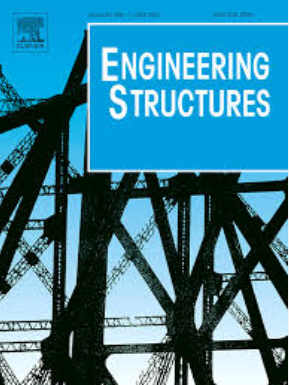Bayesian enhanced graph neural networks: Refining design spaces for hollow concrete components with optimum mechanical performance
IF 5.6
1区 工程技术
Q1 ENGINEERING, CIVIL
引用次数: 0
Abstract
Lightweight, non-structural concrete partition walls with customized hollow sections enhance earthquake resilience, particularly by optimizing horizontal stiffness to resist lateral forces in seismic engineering. However, exhaustive search of the entire design space to optimize horizontal stiffness is time-consuming. Therefore, this research aims to develop a classifier to filter out less promising sections, reducing the search space and improving efficiency. Combining Graph Neural Networks (GNNs) and Bayesian Neural Networks (BNNs) offers computational- and time-efficient solutions for classification tasks applicable to the design of hollow building components. However, the impact of different BNN configurations within this hybrid remains underexplored. To address this, we proposed and compared eight hybrid models with different BNNs to identify the optimal hybrid model based on classification accuracy. Results show that the BNN featuring a Bayesian layer followed by two linear layers (BLL) is most effective, achieving around 90 % classification accuracy in both training and testing datasets. To assess search space reduction, we test the models on 2000 samples. The hybrid model featuring BLL in its BNN achieves the best performance, with a 26.85 % search space reduction in the search space. Compared to a traditional statistical model, which achieves a 17.7 % search space reduction, the optimal hybrid model demonstrates superior effectiveness. The present study focuses on single-objective optimization, specifically targeting the performance of horizontal stiffness in directions more sensitive to the configuration change of morphed honeycomb channels in the hollow component. Future work will expand to multi-objective optimization, concurrently considering other mechanical properties for a more comprehensive optimization.
求助全文
约1分钟内获得全文
求助全文
来源期刊

Engineering Structures
工程技术-工程:土木
CiteScore
10.20
自引率
14.50%
发文量
1385
审稿时长
67 days
期刊介绍:
Engineering Structures provides a forum for a broad blend of scientific and technical papers to reflect the evolving needs of the structural engineering and structural mechanics communities. Particularly welcome are contributions dealing with applications of structural engineering and mechanics principles in all areas of technology. The journal aspires to a broad and integrated coverage of the effects of dynamic loadings and of the modelling techniques whereby the structural response to these loadings may be computed.
The scope of Engineering Structures encompasses, but is not restricted to, the following areas: infrastructure engineering; earthquake engineering; structure-fluid-soil interaction; wind engineering; fire engineering; blast engineering; structural reliability/stability; life assessment/integrity; structural health monitoring; multi-hazard engineering; structural dynamics; optimization; expert systems; experimental modelling; performance-based design; multiscale analysis; value engineering.
Topics of interest include: tall buildings; innovative structures; environmentally responsive structures; bridges; stadiums; commercial and public buildings; transmission towers; television and telecommunication masts; foldable structures; cooling towers; plates and shells; suspension structures; protective structures; smart structures; nuclear reactors; dams; pressure vessels; pipelines; tunnels.
Engineering Structures also publishes review articles, short communications and discussions, book reviews, and a diary on international events related to any aspect of structural engineering.
 求助内容:
求助内容: 应助结果提醒方式:
应助结果提醒方式:


